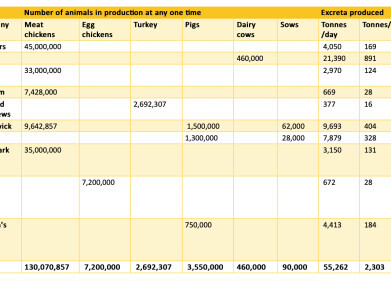Waste Management
Clothes Have Released an Estimated 5.6 Million Tonnes of Synthetic Fibres
Oct 07 2020
A new study from the United States has estimated that the total amount of synthetic fibres released into the environment due to washing our clothes is equivalent to 5.6 million tonnes. Perhaps even more concerningly, just over half of that total (2.9 million tonnes) is likely to have escaped wastewater treatment plant procedures and ended up in our rivers, lakes, seas and oceans.
Even the fibres which are captured by wastewater plants are still likely to infiltrate our environment, in any case. That’s because once they are collected by the filtration system, they are often simply lumped together with biosolid sludge, which is they either sent to landfill or used as natural fertiliser to aid crop growth on agricultural fields. Either way, the vast majority of these tiny fibres are contaminating the atmosphere in one form or another.
Small size, huge problem
It’s estimated that around 14% of all plastics manufactured today are used to create the synthetic fibres which make up clothing. When we use a washing machine to clean those garments, the movements of the machine will force them to shed tiny strands of plastic that are far thinner than a single strand of human hair.
These particles are known as microplastics and they are believed to be very dangerous, precisely because we know so little about them. Those which end up in marine environments can be mistaken for food by fish and other underwater organisms, causing untold damage to their internal organs. Those animals can then be eaten by larger species further up the food chain, thus potentially affecting even humans eventually.
Land as well as sea
The impact of microplastics in a terrestrial environment is not yet fully known. However, the recent study from the University of California Santa Barbara (UCSB) found that land-based microplastic pollution outweighed water-based contamination for the first time, primarily due to the improvement of wastewater treatment systems.
“I hear people say that the synthetic microfibre problem from apparel washing will take care of itself as wastewater treatment works become more widespread around the world and more efficient,” remarked Roland Geyer, a professor of industrial ecology at UCSB and an author on the study. “But really what we're doing is just moving the problem from one environmental compartment to another.”
Alarming results
As well as the discovery of rising terrestrial pollution, Geyer and his team used some rather complicated mathematics to estimate the amount of fibres lost cumulatively since 1950. To do so, they had to take into account a multitude of variables, including the percentage of people with access to washing machines, the type of machines involved, the frequency of washing and the efficacy of wastewater systems.
The outcome of their equations was the estimation that 5.6 million tonnes of synthetic fibres have been shed by garments and released into the environment in the last 66 years. To ensure that shocking trend does not continue, the authors of the study recommend that consumers follow scientists’ lead by reducing our consumption of plastic, while the industry must investigate more environmentally friendly forms of clothing, washing machines and wastewater treatment systems.
Events
May 05 2024 Seville, Spain
May 13 2024 Munich, Germany
May 23 2024 Beijing, China
May 23 2024 Beijing, China
Jun 10 2024 Algiers, Algeria
.jpg)












